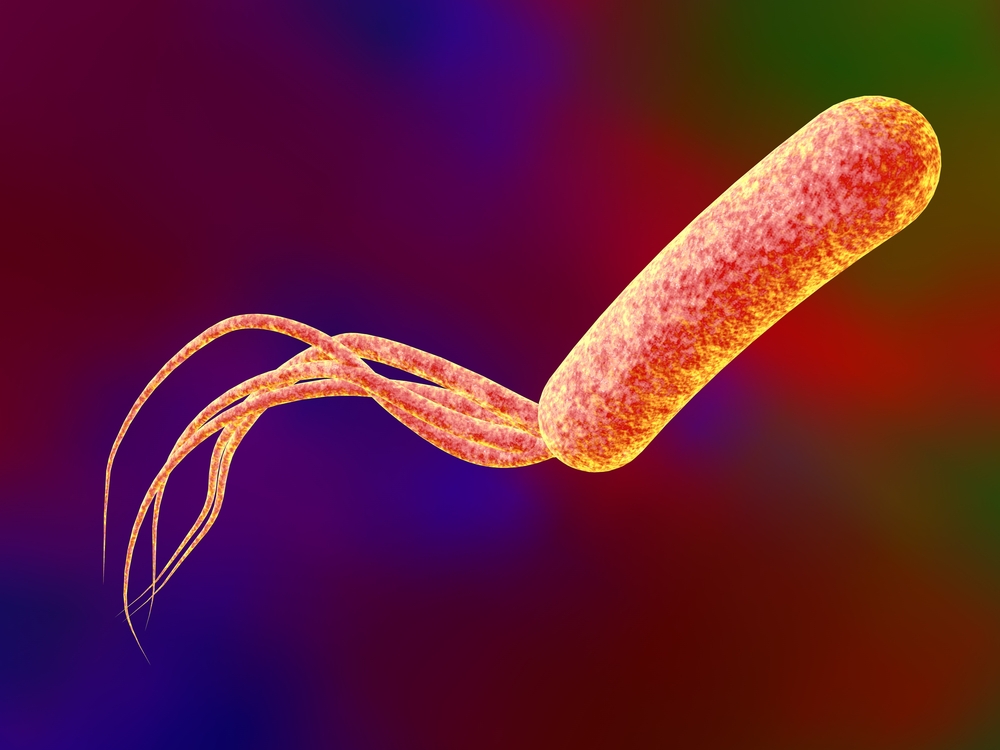By Wagging its ‘Tail,’ Bacteria Common in CF Lung Infections May Initiate Immune Reaction
Written by |

Researchers have found that a “swimming” movement by Pseudomonas aeruginosa, the bacteria most commonly associated with lung infections in cystic fibrosis (CF) patients, triggers an immune response against the pathogen, according to a new study. Its findings may help in targeting therapies to resolve lung infection in CF.
The study, “Swimming Motility Mediates The Formation Of Neutrophil Extracellular Traps Induced By Flagellated Pseudomonas aeruginosa,” was published in the journal PLOS Pathogens.
A person’s immune system reacts to the presence of bacteria by sending immune cells, called neutrophils, to fight off these invaders. Indeed, neutrophils are a most effective immune response against P. aeruginosa, and use several strategies to eliminate the bacteria — including one known as neutrophil extracellular traps (NETs). Highly efficient, NETs are DNA-based scaffolds containing antimicrobial proteins that help trap and eliminate bacteria.
Exactly how the presence of P. aeruginosa activates the formation of NETs, however, has puzzled scientists.
As a possible answer, researchers investigated the ability of P. aeruginosa to activate NET release at different phases of bacterial growth, as these bacteria express different molecules for survival depending on their growth phase. While colonies at an earlier growth phase mainly express molecules to improve their mobility and infection capacities, in later phases the bacteria mainly focus on colonizing the host tissue.
Researchers found that P. aeruginosa in what is called an exponential growth phase strongly promoted NET formation by neutrophils, whereas this response dramatically slowed in later stages of bacterial growth.
The team also found that the flagellum (a sort of “tail,” whose movement allows bacteria to move) of P. aeruginosa was primarily responsible for inducing NET release. Accordingly, bacteria with deficient and immobile flagellum were not as able to trigger the formation of NETs.
The flagellum is enriched in a protein called flagellin, which researchers thought could be responsible for inducing NETs. But experiments using flagellin alone showed that this protein was not enough to trigger the response. NET formation was also independent of two proteins expressed in neutrophils that sense flagellin, called TLR5 and NLRC4 receptors.
Rather, what triggered NET release from neutrophils was the movement of the flagellum itself, which is why immobile bacteria could not trigger NET release. Researchers also found that forced contact between immobile P. aeruginosa and neutrophils restored the NET-inducing ability of the bacteria.
“Our data show that the flagellum, the organelle that provides swimming motility to P. aeruginosa, is the main factor required to induce NET release,” the researchers wrote. “Our novel findings indicate that the flagellum, and in particular swimming motility, mediates P. aeruginosa-induced NET extrusion independently of the well-characterized flagellin receptors.”
These findings may help design future therapies that targeting the flagellum and bacterial motility to better treat lung infections and CF.






